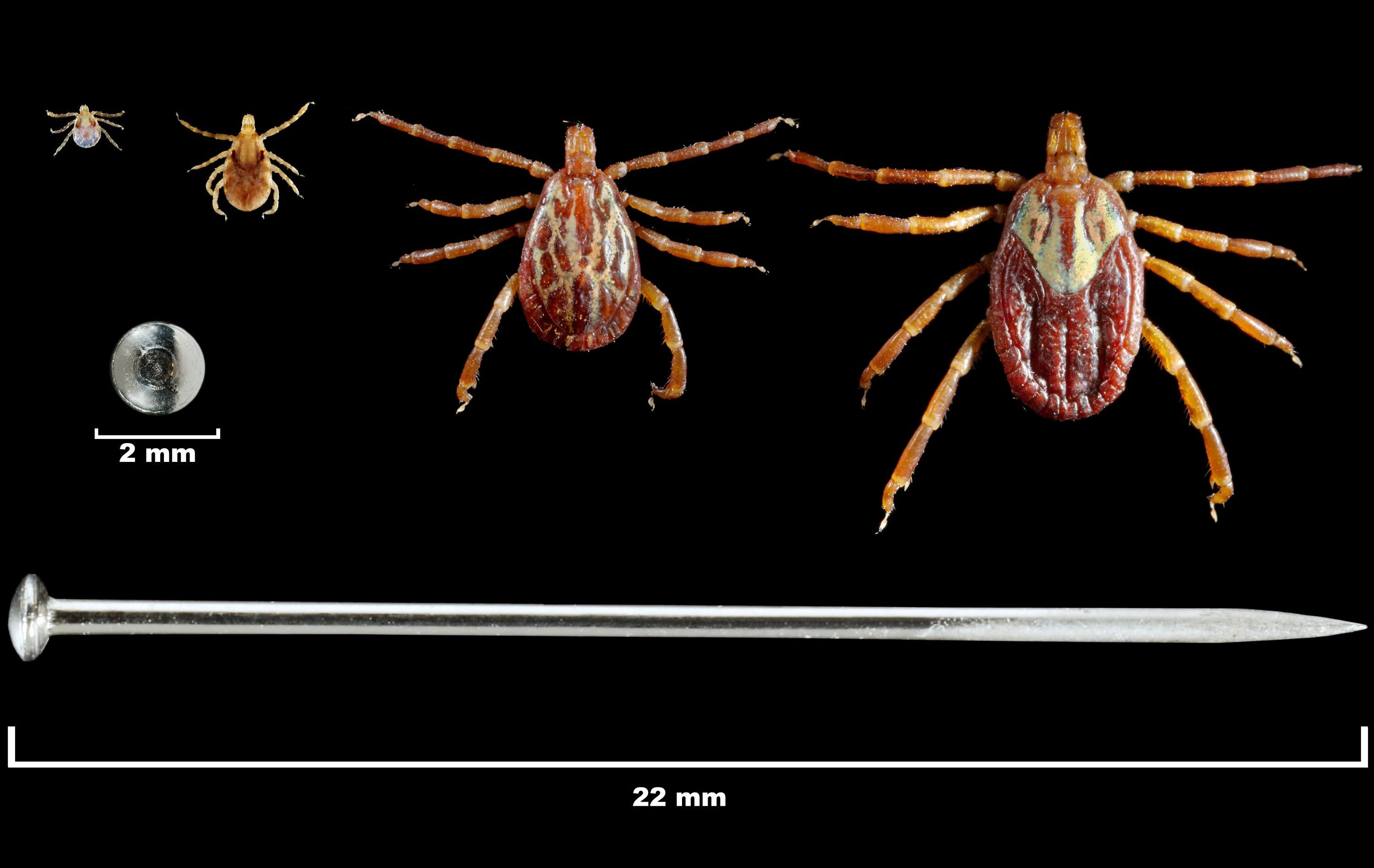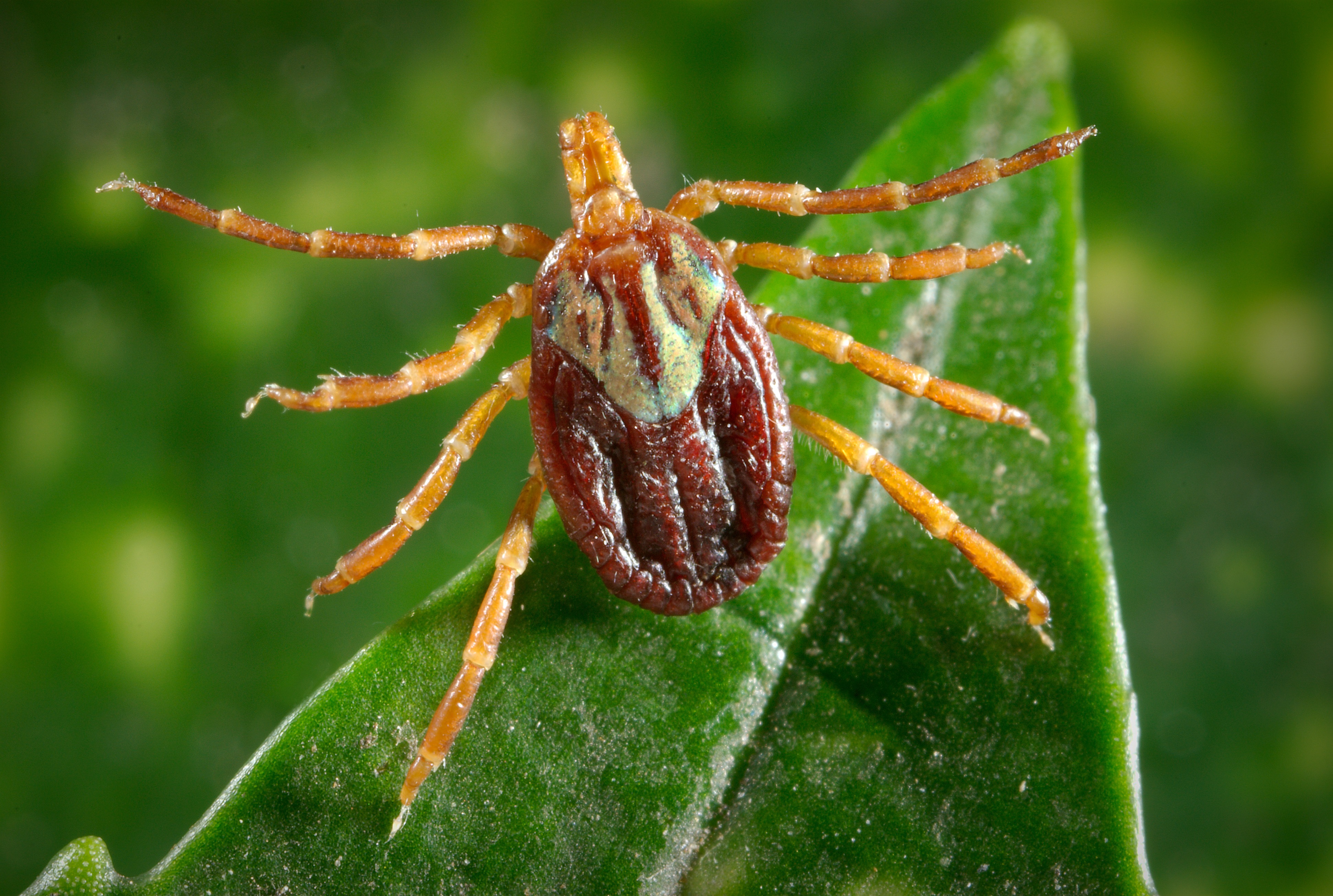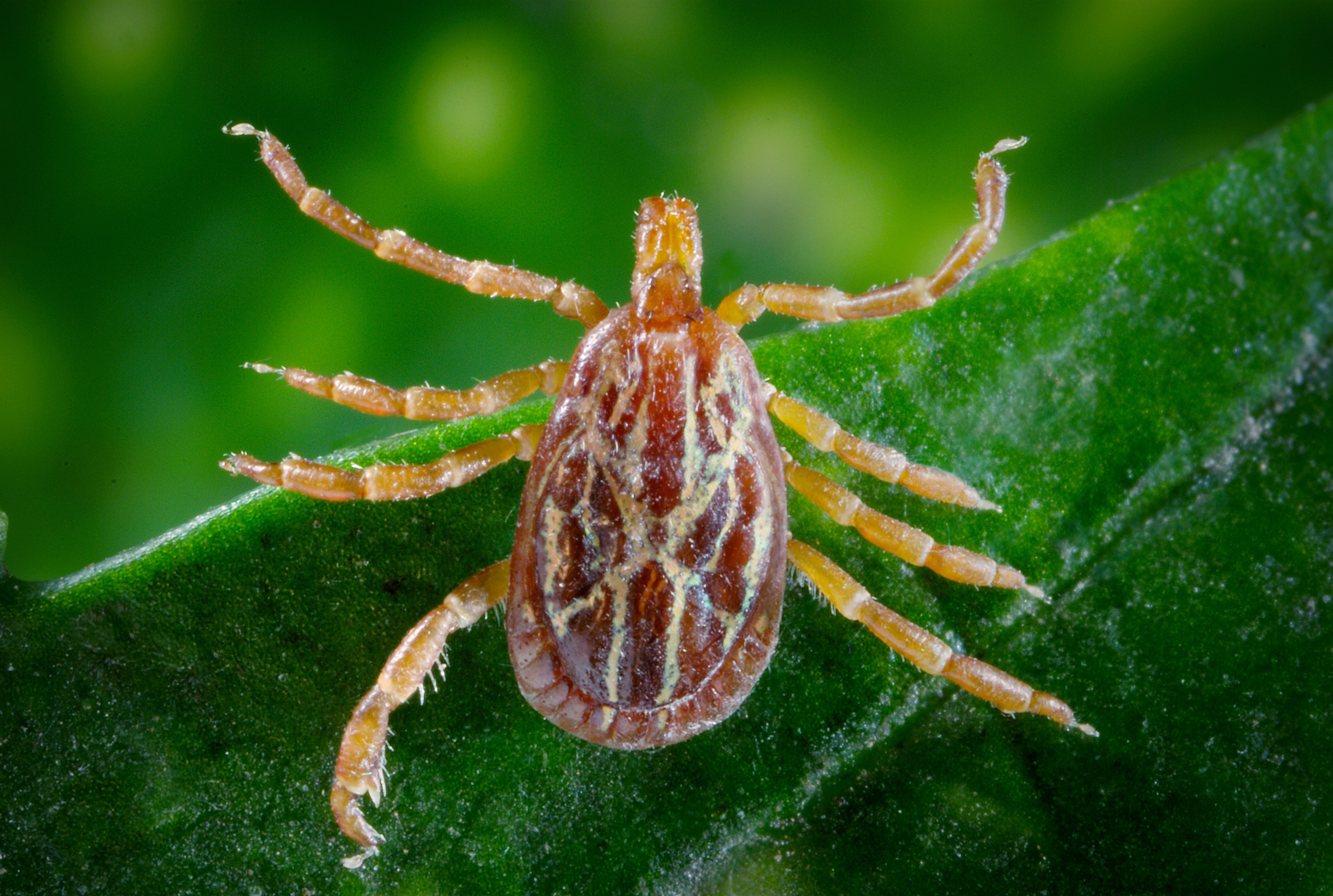Common name: Gulf Coast tick

Adult female (left) and male (right) Amblyomma maculatum. Photo: Indiana Department of Health.
The Gulf Coast tick, Amblyomma maculatum, is a 3-host tick that feeds on a variety of bird and mammal hosts, including humans. Historically, Gulf Coast ticks were found only in the southeastern part of the United States, but recent collections have revealed a larger distribution, including collections of this tick in Indiana. This tick is of increasing concern due to its ability to transmit several pathogens of veterinary and medical importance, including Rickettsia parkeri, which has been found in Amblyomma maculatum ticks collected in Indiana.
Page Last Updated: September 27, 2024




